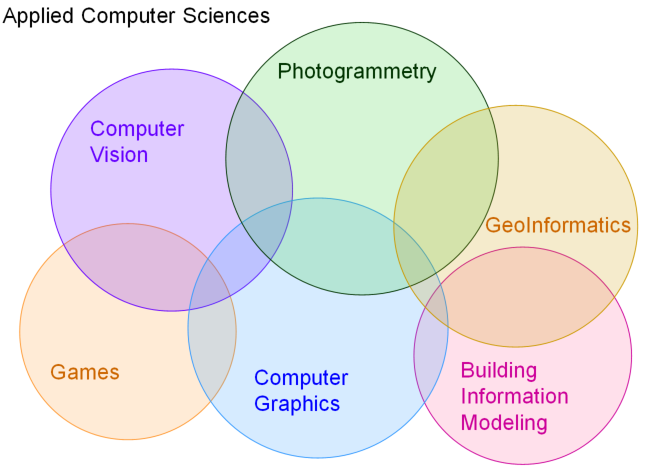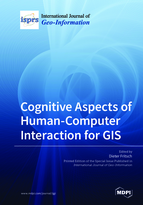Cognitive Aspects of Human-Computer Interaction for GIS
A special issue of ISPRS International Journal of Geo-Information (ISSN 2220-9964).
Deadline for manuscript submissions: closed (28 February 2019) | Viewed by 60478
Special Issue Editor
2. Institute of Distributed and Parallel Systems, University of Stuttgart, 70147 Stuttgart, Germany
Interests: geographical information science; computer vision; computer graphics; computer games; photogrammetry; remote sensing and statistical inference
Special Issues, Collections and Topics in MDPI journals
Special Issue Information
Dear Colleagues,
The widespread use of emerging technologies for 3D modelling and 3D visualization, such as Augmented Reality, Virtual Reality, and 3D/4D App developments, offers GIS new interfaces for Human–Computer Interactions. This also goes along with progress in big data analyses using machine learning and deep learning methods, but this is still in its infancy with regard to GIS data analysis. Most of the high-quality urban scenes, such as 3D vectorized buildings and city models, are output by interactive workflows, which should be replaced, step-by-step, by more automation in near future. Therefore, this Special Issue will deliver the state-of-the-art in 3D modeling using interactive and semi-automated and fully-automated workflows, in particular when 3D urban scenes have to be interpreted and vectorized.
Today we may let tell 3D objects its own stories, in text and messages, audio, and video. This requires the definition of storyboards to present further geometries, images, and semantics. Therefore, an integration of semantic models/ontologies with geometric data and metadata is necessary—also in order to offer semantic details in coarse-to-fine modes, just to adapt it to the user level. A child in kindergarten may play with a 2D, 3D and 4D GIS app, purely for fun, school pupils might use it to learn about their home town and its history, while students [DM1] and adults might expect more complex and dense information.
GIS is no longer the only bridge for disciplines in surveying—it has become one of many fascinating fields and technologies collaborating together, as given in the following figure. This means the data collectors, data processors and data presenters should collaborate closely; for example, we may link photogrammetry and computer vision with geoinformatics and building information modeling on the one hand, and with computer graphics and serious gaming on the other hand. The boundaries of the different fields intersect and it is exciting to see the output of these intersections. Serious gaming offers platforms for advanced 3D modeling and rendering and, therefore, also plays an important role in cognitive aspects of Human–Computer Interaction.

Figure 1. Collaboration of several scientific fields in 2D, 3D and 4D modeling and visualization.
Therefore, this issue is open for all articles dealing with the state-of-the-art in Human–Computer Interaction and new developments, integrating Mixed Realities, 3D/4D app developments and progress in automated 3D urban scene modeling.
Prof. Dr. Dieter Fritsch
Guest Editor
Manuscript Submission Information
Manuscripts should be submitted online at www.mdpi.com by registering and logging in to this website. Once you are registered, click here to go to the submission form. Manuscripts can be submitted until the deadline. All submissions that pass pre-check are peer-reviewed. Accepted papers will be published continuously in the journal (as soon as accepted) and will be listed together on the special issue website. Research articles, review articles as well as short communications are invited. For planned papers, a title and short abstract (about 100 words) can be sent to the Editorial Office for announcement on this website.
Submitted manuscripts should not have been published previously, nor be under consideration for publication elsewhere (except conference proceedings papers). All manuscripts are thoroughly refereed through a single-blind peer-review process. A guide for authors and other relevant information for submission of manuscripts is available on the Instructions for Authors page. ISPRS International Journal of Geo-Information is an international peer-reviewed open access monthly journal published by MDPI.
Please visit the Instructions for Authors page before submitting a manuscript. The Article Processing Charge (APC) for publication in this open access journal is 1700 CHF (Swiss Francs). Submitted papers should be well formatted and use good English. Authors may use MDPI's English editing service prior to publication or during author revisions.
Keywords
- 3D and 4D App Developments
- Augmented Reality
- Virtual Reality
- Storyboard Design
- Adaptive Ontology
- Machine Learning
- Deep Learning






